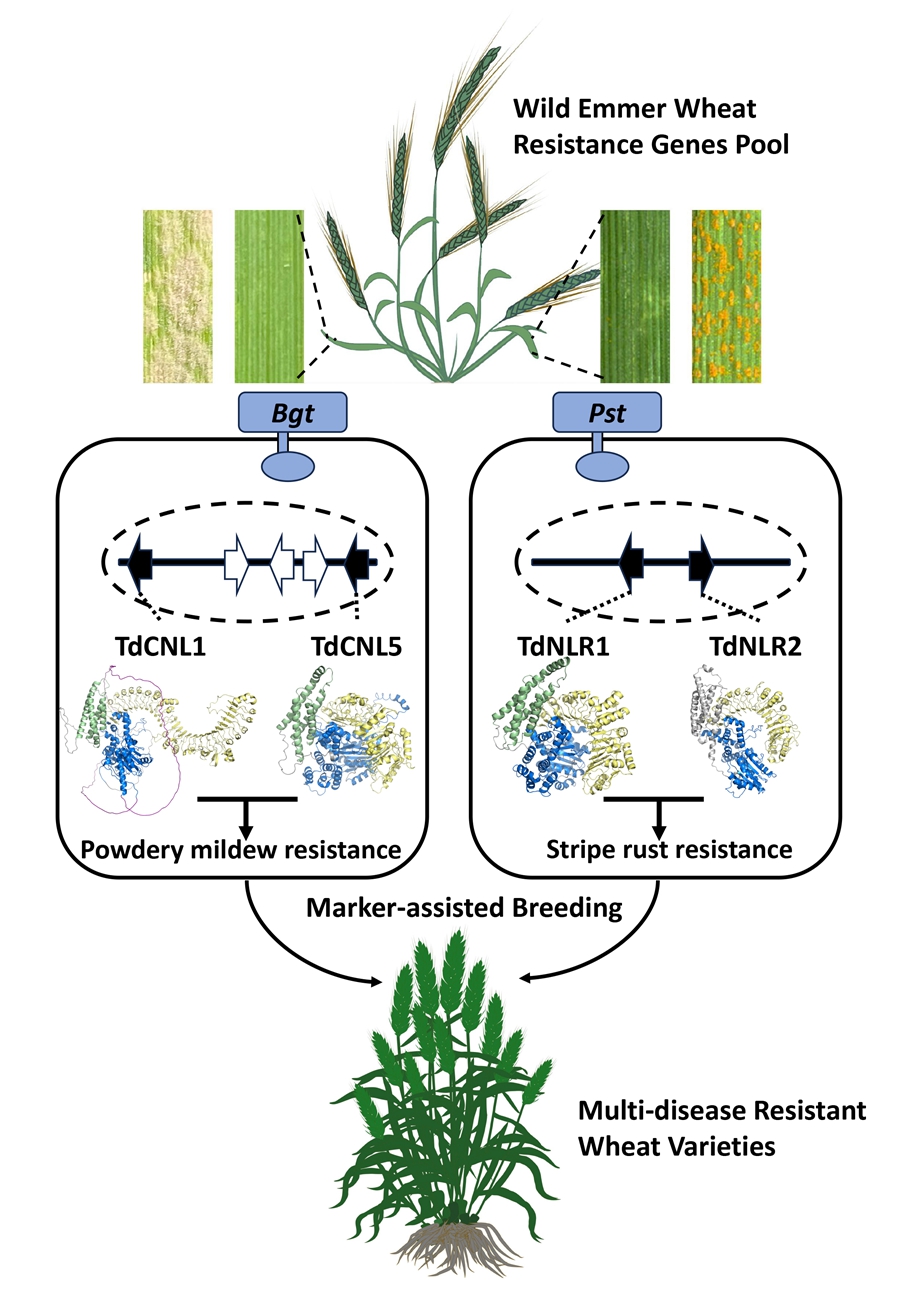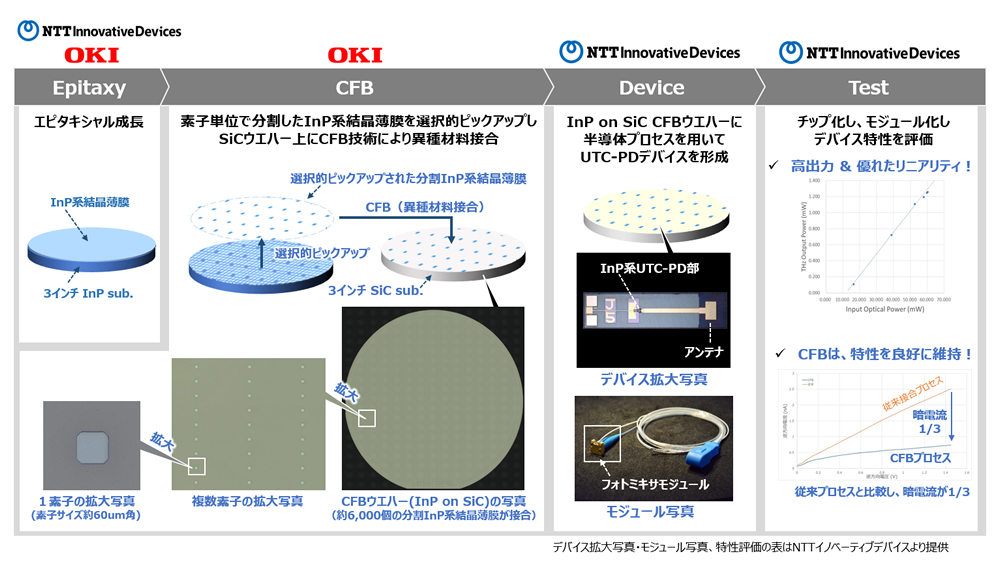2025-06-10 中国科学院(CAS)
 The cloning of powdery mildew resistance gene Pm26 and stripe rust resistance gene YrTD121 from wild emmer wheat (Triticum dicoccides) and their breeding application (Image by IGDB)
The cloning of powdery mildew resistance gene Pm26 and stripe rust resistance gene YrTD121 from wild emmer wheat (Triticum dicoccides) and their breeding application (Image by IGDB)
<関連情報>
- https://english.cas.cn/newsroom/research_news/life/202506/t20250610_1045332.shtml
- https://www.nature.com/articles/s41588-025-02208-z
- https://www.nature.com/articles/s41588-025-02207-0
野生エマー由来の非定型NLRペアTdCNL1/TdCNL5がコムギにうどんこ病抵抗性を付与する An atypical NLR pair TdCNL1/TdCNL5 from wild emmer confers powdery mildew resistance in wheat
Keyu Zhu,Miaomiao Li,Lingli Dong,Huaizhi Zhang,Deyun Zhang,Ping Lu,Qiuhong Wu,Jingzhong Xie,Yongxing Chen,Guanghao Guo,Panpan Zhang,Beibei Li,Wenling Li,Lei Dong,Yikun Hou,Yijun Yang,Dan Qiu,Gaojie Wang,Baoge Huang,Xuejia Cui,Hongkui Fu,Chengguo Yuan,Tzion Fahima,Eviatar Nevo,… Zhiyong Liu
Nature Genetics Published:09 June 2025
DOI:https://doi.org/10.1038/s41588-025-02208-z
Abstract
Resistance to wheat powdery mildew is commonly mediated by individual resistance proteins, most of which encode nucleotide-binding leucine-rich repeat (NLR) receptors. Here we report that the powdery mildew resistance gene MLIW170/PM26 in wild emmer and bread wheat derivatives is determined by a genetically linked atypical NLR pair TdCNL1/TdCNL5. Map-based cloning and PacBio HiFi long-read sequencing revealed that TdCNL1 encodes an atypical coiled-coil-domain-containing NLR protein (CNL) fused with a new potassium-dependent sodium-calcium exchanger integrated domain, whereas TdCNL5 encodes a canonical CNL protein. Mutagenesis and virus-induced gene silencing experiments indicated that both TdCNL1 and TdCNL5 are essential for powdery mildew resistance. Transgenic plants with TdCNL1 alone or TdCNL1/TdCNL5 together show resistance, whereas Fielder with TdCNL5 alone was susceptible. Geographically, MLIW170/PM26 occurs in a few Southern populations of wild emmer wheat. Our study highlights an atypical NLR pair coordinately regulating powdery mildew resistance and provides a diversified resistance gene resource for wheat improvement.
野生エメルに由来するヘッドツーヘッドNLR遺伝子ペアはコムギに縞葉さび病抵抗性を付与する A head-to-head NLR gene pair from wild emmer confers stripe rust resistance in wheat
Yanling Hu,Miaomiao Li,Yuqin Li,Lilin Du,Ruijie Xie,Fei Ni,Chongjing Xia,Ke Wang,Yanyan Huang,Binyang Xu,Yinghui Li,Yunfeng Jiang,Ming Hao,Bo Jiang,Shunzong Ning,Zhongwei Yuan,Lihua Feng,Lianquan Zhang,Shisheng Chen,Bihua Wu,Zhiyong Liu,Tzion Fahima,Dengcai Liu & Lin Huang
Nature Genetics Published:09 June 2025
DOI:https://doi.org/10.1038/s41588-025-02207-0
Abstract
Wheat stripe rust poses a major threat to global food security. Discovery of disease resistance genes from wild relatives enables multigene stacking that could enhance durability. Here we use map-based cloning and long-read sequencing to isolate two adjacent nucleotide-binding and leucine-rich repeat (NLR) receptors from wild emmer wheat. Using mutagenesis, gene silencing and genetic transformation, we show that the genes TdNLR1 and TdNLR2 oriented head-to-head are both required for YrTD121-mediated stripe rust resistance. TdNLR1 encodes a canonical NLR (CC-NB-ARC-LRR) protein, whereas TdNLR2 encodes an atypical one (NB-ARC-LRR). Both genes lack an integrated domain previously associated with effector perception, representing an uncommon architecture for paired NLRs in plants. The coiled coil domain of TdNLR1 triggers cell death and self-associates in planta. YrTD121 was present in wild emmer but absent in all other Triticum species examined. Our work sheds light on the function of paired NLRs in conferring disease resistance and facilitates breeding for resistance.



